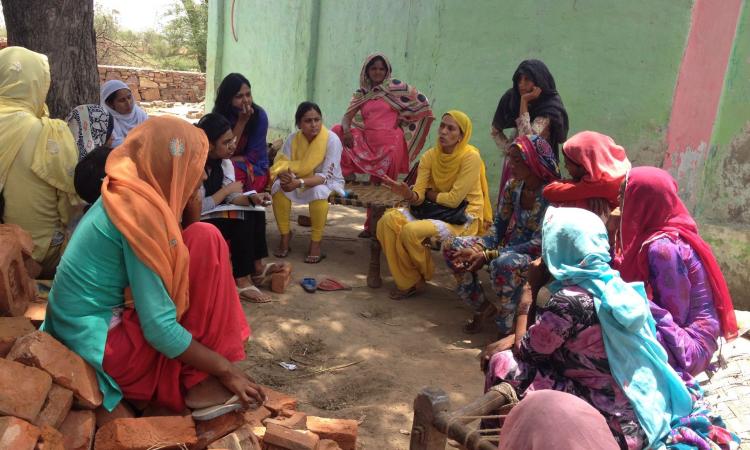
Social media has brought the world to our desktop where information is available at the click of a button. The issues now are not just related to a particular community, region, state, or country; they are global. We get attached to them directly or indirectly and share our opinions on them, which is an easy and powerful way to contribute towards addressing issues we care about.
The much-celebrated Swachh Bharat Mission, the three-year-old flagship programme of the government aimed at improving sanitation in our country, has been one topic that has attracted everyone’s attention. A recent special newsletter of India Water Portal focusing on the World Toilet Day on November 19, talked about facts related to sanitation and featured interesting articles and blogs on how poor sanitation adversely impacts health, coupled with some hard-hitting photo essays. These articles reveal the terrible plight of people forced to scavenge to survive in India and how they continue to suffer due to deep-rooted inequalities that cut across Indian society. One article, titled “Sanitation must go beyond shame and stigma” by Seetha Gopalakrishnan, featured the author’s perspectives from a conference held in 2016 at S. M. Sehgal Foundation, the non-profit organisation I work for. This inspired me to write about some other initiatives we have taken since then. There are two key initiatives--one is a series of radio programmes aiming at behaviour change and another one on preparing citizens to be sanitation ambassadors to provide strength to sanitation drives in their villages.
What’s World Toilet Day for?
World Toilet Day is an international day officially observed by the United Nations to address the global sanitation crisis. Each year the day is marked by worldwide public education campaigns and events to raise awareness. According to the UN report card, close to 946 million people in the world have little or no access to sanitation and continue to practice open defecation. According to the 2011 census, 53.1 percent (63.6 percent in 2001) of households in India do not have a toilet, with 69.3 percent (78.1 percent in 2001) of it in rural areas and 18.6 percent (26.3 percent in 2001) in urban areas. Regardless of the specific percentages, clearly, a large chunk of our population still heads to the fields to relieve themselves.
A special initiative of Sehgal Foundation utilises community media, i.e. community radio, which is considered to be one of oldest forms of oral media, also understood to be local, cost-effective, and easy-to-access grassroots forms of communication. Community radio Alfaz-e-Mewat FM 107.8, operational since 2012, broadcasts 13 hours daily to over 200 villages of Nuh district, Haryana, sharing information and awareness about sanitation issues as well as other community concerns.
Does gender have anything to do with sanitation?
A Swachh Bharat Mission mass media campaign has actress Vidya Balan promoting toilet use. Women are more in need of toilets mostly because of their biological makeup (menstruation, for example) but also because they are more vulnerable to harassment. Women (celebrities especially) can attract more audience and persuade them to use toilets more effectively.
Toilets: ease or ordeal?
Recollecting a community radio series broadcast a year ago titled ”Shochalay Mere Angana” (toilet in my backyard) that explored the gender and sanitation link, I am reminded of a midsized village of Bhadas in Nuh district, Haryana, where we, a bunch of community radio workers, gathered to meet a small group of rural women basking in the sun to understand how important toilets were to them. The discussion taught us a lesser-known fact: the ordeals these women faced in the absence of a toilet at home.
The first few meetings and discussions were about knowing each other better, establishing that rapport (trust came much later), then learning about difficulties and health impacts they faced due to lack of toilets. We were being watched--by husbands of some of the women present in the group who wanted to know what conversations we were having.
The women’s pain was vivid. They shared that when they are not able to relieve themselves in the wee hours, they had to control it for the whole day so they could go out in the night. Some reported that male decision-makers of the family said they would only construct toilets when the government subsidy is received and some have toilets constructed but don’t use them. An incident shared by a woman from a Balmiki household showed how gender roles influence decisions about sanitation. She said in a subdued voice, “I should not be sharing this with joy but what repeated reminders to the male members of the family about constructing toilets could not do, a small accident that left my husband immobile did. His leg was fractured and he could not go out to defecate, which translated into toilet construction at home. We were really happy.”
That radio programming was one of our first attempts by Alfaz-e-Mewat to see sanitation issue through a gender lens. And the message rings loud in my ears--just as charity begins at home, sanitation and hygiene start with you and me.
(Arti Manchanda Grover is programme leader, Communications, S. M. Sehgal Foundation)
Disclaimer: The views and opinions expressed in this article are those of the author/s and do not necessarily reflect the policy or position of India Water Portal.
/articles/does-sanitation-really-matter-us